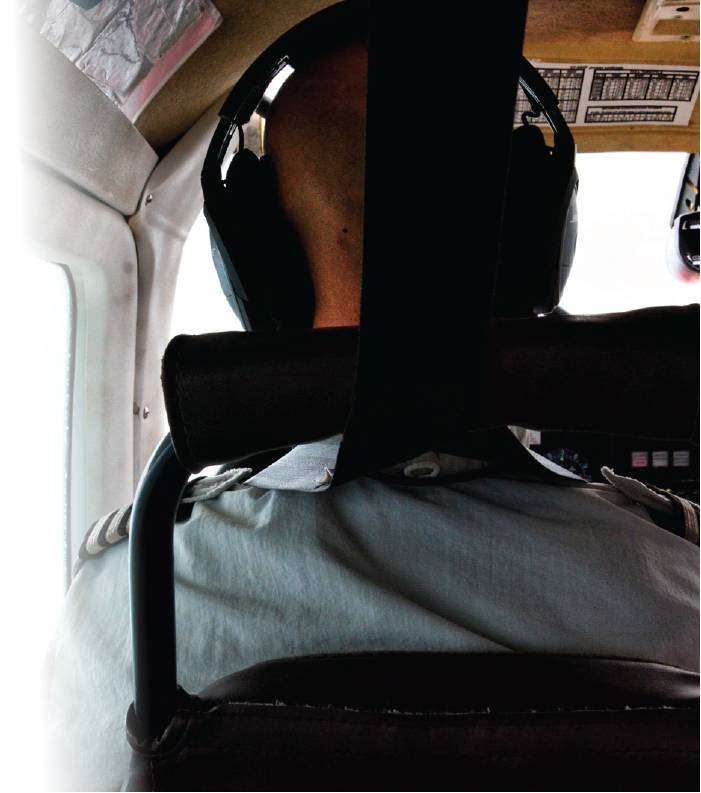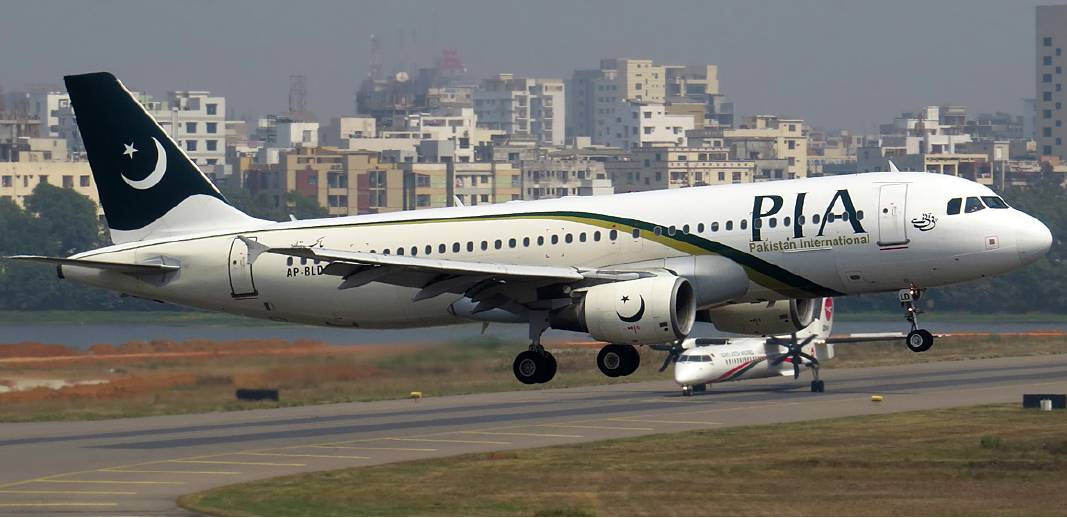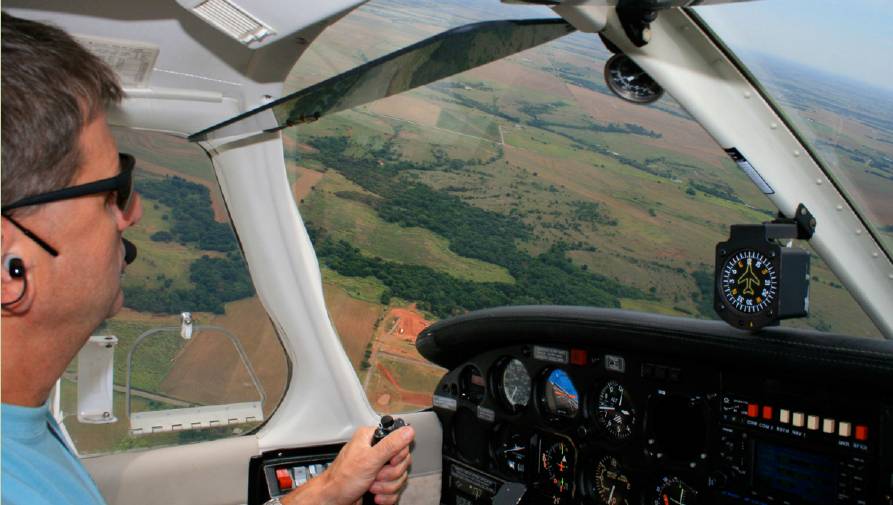AIR TRANSPORT Pilot qualifications and licensing
Logbooks under scrutiny
The crash of a Pakistan International Airlines (PIA) Airbus A320 in June 2020, after an apparent catalogue of flight deck errors, has thrown a spotlight on pilots’ credentials and licences. How widespread is the problem? ALAN DRON investigates.
The demise of PIA Flight PK8303 from Lahore to Karachi on 22 May 2020 this year was shocking, with tales rapidly circulating that the aircraft had apparently tried to land at Jinnah International Airport without having lowered its undercarriage.
 Adobe Stock
Adobe Stock
Far more shocking was the preliminary report into the accident a month later by Pakistan’s Aircraft Accident Investigation Board (AAIB). It laid out a jaw-dropping catalogue of actions by the aircraft’s pilots, who not only persisted with a highly unstable approach but disregarded both advisory messages from air traffic control and automated cockpit warnings on overspeed, ground proximity and failure to lower the landing gear. The pilots also spent time on the flight deck discussing the coronavirus pandemic and the effect it had had on their respective families – an obvious distraction to their work.
Within 24 hours, the country’s Aviation Minister Ghulam Sarwar Khan, revealed that a previous investigation into pilot licensing had been ongoing since another crash in 2018. Following that earlier crash, it was discovered that the test date on the pilot’s licence was a public holiday, suggesting that testing could not have taken place on that day.
He went on to say that the enquiry had determined that more than 260 of the country’s 860 active pilots had fake or suspicious licences or had cheated in various exams to gain their pilots’ qualifications.
A PIA spokesman then confirmed to news agency AFP that 150 were flying with PIA – more than one-third of the flag-carrier’s flight deck workforce. (The total number of pilots named by the government was subsequently significantly reduced.)
The revelations led to many Pakistani pilots working overseas being suspended by their respective airlines. It also led to the US Federal Aviation Administration (FAA) and the European Aviation Safety Agency (EASA) revoking permission for PIA to fly into both the US and the European Union.
Unqualified?
The Karachi crash, which killed 97 of the 99 on board, together with one person on the ground, also cast a spotlight on the more general problem of ensuring effective scrutiny of pilots’ qualifications. Just how many people behind the controls of an airliner do not have the qualifications to be there? How widespread might the problem of fake licences be?
“I think many of the facts on this matter are yet to present themselves,” said Kieran Byrne of the RAeS Flight Operations Group, who has a particular interest in safety management systems and oversight.
“From my own experience, flight crew changing from operator to operator experience rigorous documentation checks to ensure compliance with qualification requirements set by national authorities. Usually this is done by suitably qualified members of the recruitment teams, normally flight crew assessors and training pilots at various stages of the new entrant process. This is dependent on the operator, based on ensuring compliance with regulatory requirements of that recruit. We have a pilot at my employer look through a prospective employee’s logbook and see if it seems legitimate – whether their experience matches their logbook.”
Standardisation
“EASA has over the last few years standardised licensing and qualification requirements across national boundaries, partly to create a level foundation of compliance, improving safety and easily transferable licences for larger numbers of qualified crew members.”
“However”, said Byrne: “There are differences around the world in regulations and oversight requirements where some national authorities, and therefore operators, implement more advanced compliance monitoring and safety management systems (SMS) compared to others, all the while complying with ICAO standards.”
Byrne looked at the preliminary report of the PK8303 incident to try to determine what the initial observations are suggesting as a probable cause. “From reading the (AAIB) series of events involved in the incident and the AAIB’s recommended actions for further investigation, all suggest that this wasn’t just something that distraction by coronavirus (discussion) would cause.”
 The Airbus A320-214 AP BLD, the aircraft involved in the accident, seen in 2016. Shadman Samee
The Airbus A320-214 AP BLD, the aircraft involved in the accident, seen in 2016. Shadman Samee
That leads to the question of whether there were failings in oversight monitoring of operations for adherence to procedures, which would be a systemic problem. “If there is a lack of procedural activity and no amending or improving of procedures through an effective SMS, then it could be an indicator of other systemic monitoring failings, perhaps on licences. The AAIB recommended further investigation into these aspects in their report.”
Byrne said his focus was not specifically on the licences while looking at the PK8303 incident but the overall tenor of the circumstances of the incident suggested that issues were more systemic: “It is not often that an investigation report raises points on authority oversight and an operator’s SMS; this may point to a larger issue.”
Slipping through the net
The Pakistani incident is not the first one to emanate from Asia. Around ten years ago, the fast-expanding Gulf carriers began to receive a large number of applications for pilots’ roles from graduates of a Philippines flight school.
A sharp-eyed airline recruitment official noticed striking similarities between many of the applications and started to dig deeper. Eventually, it was calculated that if all the pilots who had claimed to have graduated from the flight school had done so at the time they claimed, the school’s training aircraft would have been in the skies for 28 hours a day. That led to much more careful scrutiny of all applications from the Philippines.
Licensing problems are not, of course, limited to certain regions of the world. In March 2010, Swedish pilot, Thomas Salme, was arrested in the cockpit of a Corendon Airlines Boeing 737 minutes before he was due to take off from Amsterdam Schiphol.
Salme, it was discovered, had flown 10,000 hours as an airline pilot without the necessary commercial pilot’s licence, having initially learned the necessary skills on an airline’s simulator to which a friend had given him access at night-time.
A maintenance engineer by training, he had been able to gain initial employment with a small Italian airline with forged Swedish documents that were unfamiliar to the Italian carrier. He flew with them for seven years, becoming a captain, then with a UK company and the Turkish-Dutch Corendon before a tip-off from the Swedish authorities ended his career. He was fined €2,000 and banned from flying by a Dutch court and, as far as is known, has never sat behind the controls of a commercial aircraft again.
It is naturally difficult to know just how widespread the problem of false licences and qualifications is. “Of course, I do not have all the information globally, but it is definitely not my impression that this is a great problem,” said Captain Jack Netskar, President of the International Federation of Airline Pilots’ Association (IFALPA). “The airline industry is pretty much based on trust. I wouldn’t say that I perceive this as a problem. But when you do get stories like Pakistan, you ask yourself the question: ‘What is happening here?’
Of course, we can not have it like that – most definitely not. We do know that some of the less-resourceful CAAs around the world are not necessarily where they should be at a systematic behaviour of fraud(?).”
Netskar said that he had been attempting to contact the appropriate ministries and airline officials in Pakistan but, at the time of writing, was still awaiting their responses. “It’s kind of a culture that’s less transparent than we’re used to in the Western world.
There were very different stories coming out from the Pakistani pilot community, which said that fake qualifications had never happened, which contrasted with the statement issued by the aviation ministry citing several hundred unqualified pilots,” he said. He noted that the number of pilots named in the initial statement had subsequently been significantly reduced. “The quality of that list of names was really, really poor. It included people who are not even alive anymore”.
“The timing of this was very surprising. It was in connection with the temporary report of the crash and why would you announce that information and why would the Minister of Aviation do this? I immediately said: ‘This is going to have great consequences for the entire country’s airline business’ and that happened to be correct. They couldn’t fly to Europe or the US. The Minister of Aviation must have had some very bad advisors.”
“I share some of IFALPA’s views,” said Byrne. “When Pakistan’s aviation minister announced that there was this list of pilots with fake accreditation, it certainly raised questions, for many reasons.” It appeared that focus was being placed on individuals. “It seemed a very bold statement to make before any evidence could be obtained independently. I would repeat Captain Netskar’s quoted statements that this could be an oversight issue.”
He believes that there is much more to come out of the aftermath and final report of the crash. In terms of the overall problem of fake licences, “We still don’t fully understand the extent or gravity of a licensing issue, if there is one.”
 FAA
FAA
‘Fake licences’ in the US
In July 2020, the US Federal Aviation Administration (FAA) said that it would be requiring several hundred pilots and instructors, who were passed by a Cincinnati-based examiner, Michael Puehler, over a period of a decade from 2008 to 2019, to be re-examined and tested, as the FAA: “has reason to believe that Mr. Puehler issued certificates and/or ratings to airmen when the airmen did not demonstrate the qualifications to hold the certificate and/or rating for which they were tested.”
Striving for safety
The Pakistan Air Line Pilots’ Association has challenged the authenticity of the list and asked the judiciary to look into the matter. Four months after the crash, five Pakistan CAA officials were reportedly fired, with two of them being senior personnel, handling licensing matters.
Like Byrne, Netskar said the problem of false documentation was not specifically an Asian one. Individual countries where the overall flight safety culture did not meet the highest standards could be found anywhere. When it came to individual pilots cheating their way through the system, “I don’t think that’s very easy but not all systems are totally waterproof.”
IFALPA had permanent representation at ICAO, he added, and took part in much of its work, notably on the technical side. “Licensing is one very important part (of that work) that we’ve been part of for decades. One of our main focuses these days is licensing and qualification, because the job of a pilot in the future is going to look very different.”
“It was possible,” he said, “that the changing nature of aircraft meant that in future there would be less focus on how a pilot performed in a simulator but more on what sort of education they had: ‘It’s not about getting a licence, it’s about getting an education.’”
“Being able to take off and land an aircraft is one thing. Being able to interpret different operational situations is a different thing. So, what kind of skill sets do you need? What kind of academic background do you need to make the future of the airline industry the safest? We’re trying to look at this in a more holistic way.”
Byrne has no illusions as to the difficulties involved in discovering whether pilots are fraudulently claiming licences or qualification credentials. “In the short term, it may be beneficial for authorities, operators and approved training organisations to focus further on licensing and to become the useful eyes and ears, as they are, on this issue.
The larger training schools would probably have adequate resourcing and facilities for this, many with direct links to the licensing arm of national authorities However, smaller schools and ATOs and the self-improvers may not be appropriately set up for these functions, especially with difficult situations around the coronavirus pandemic.”
 Adobe Stock
Adobe Stock
